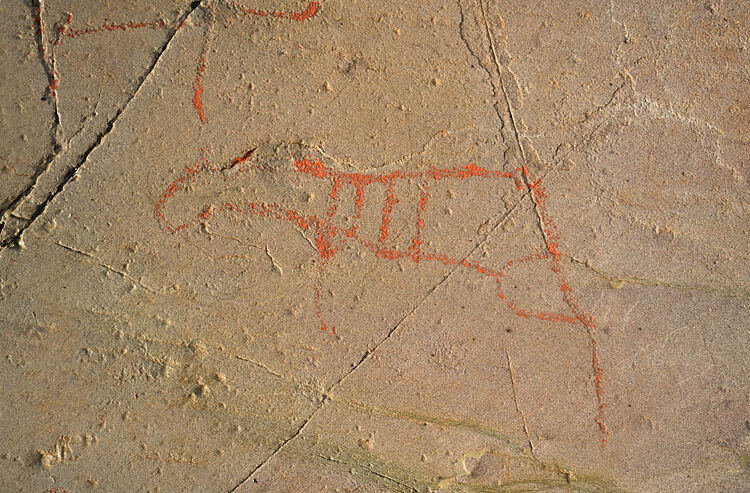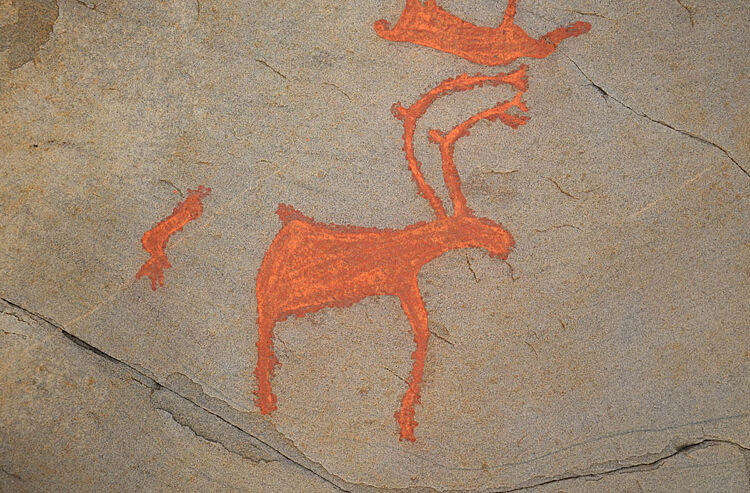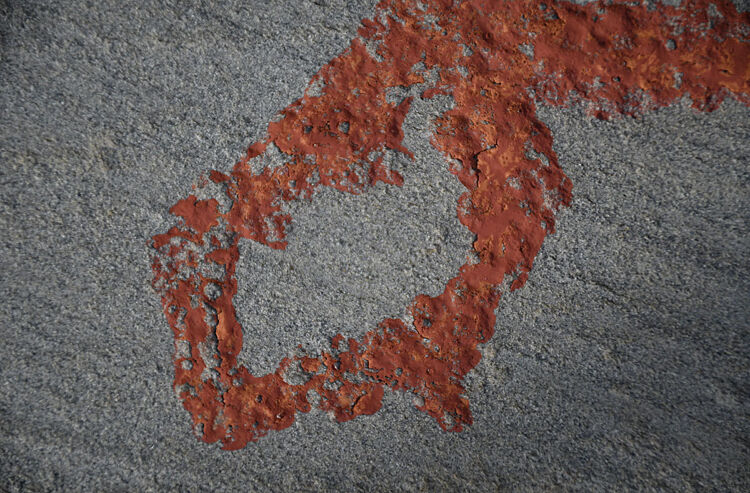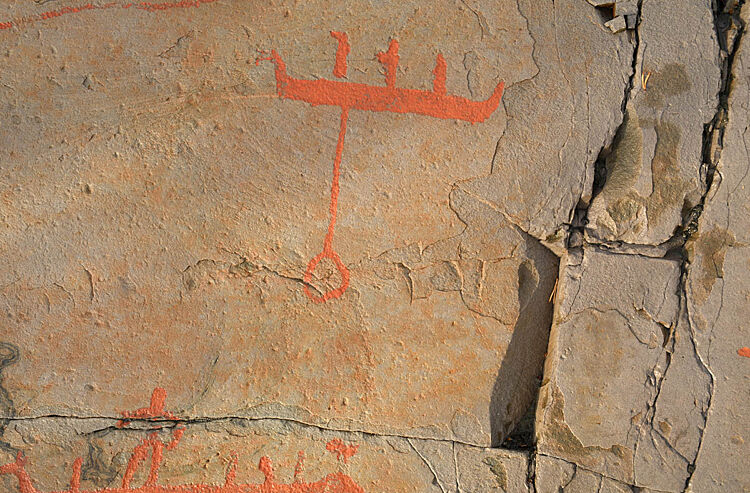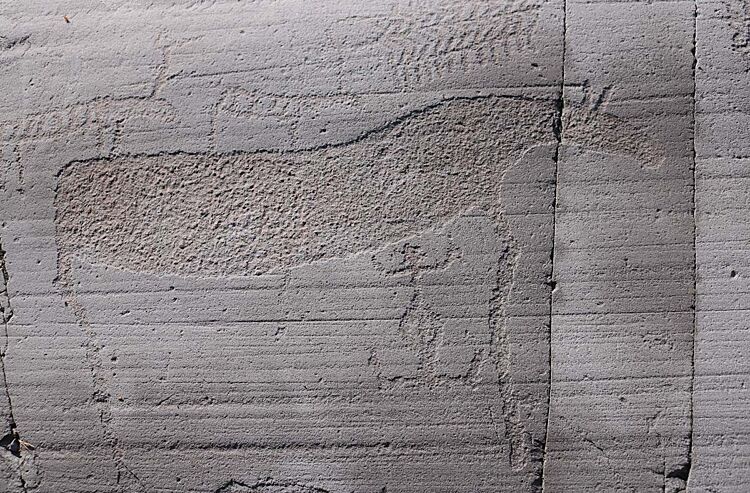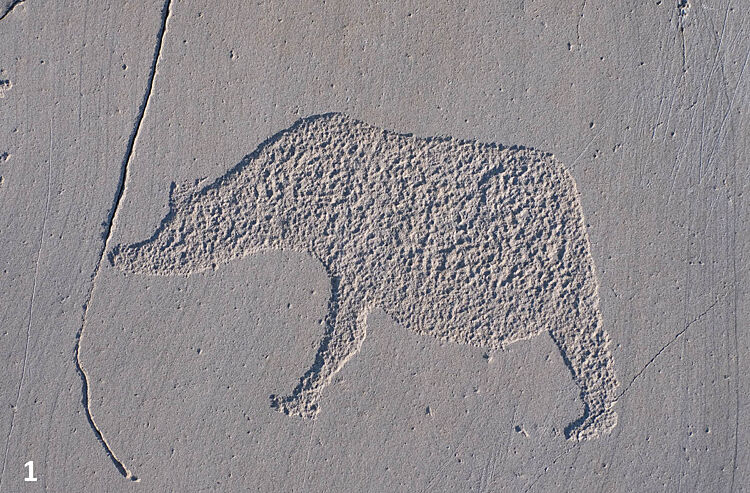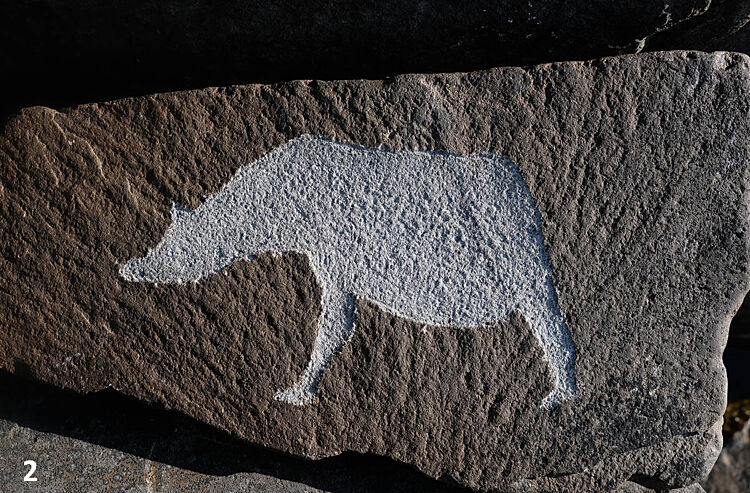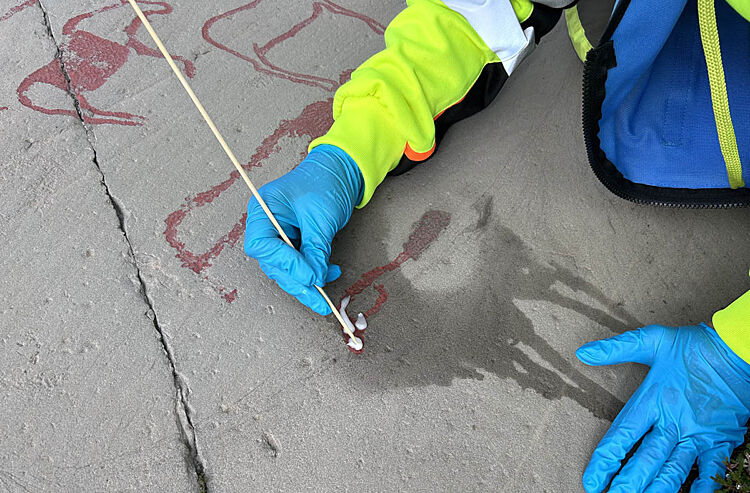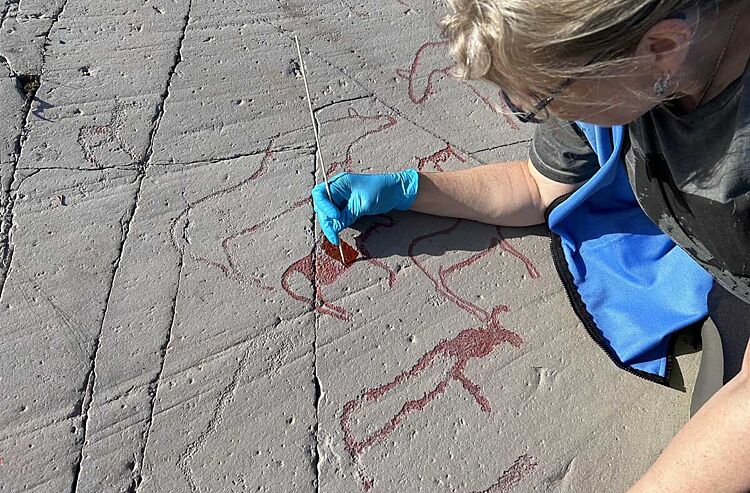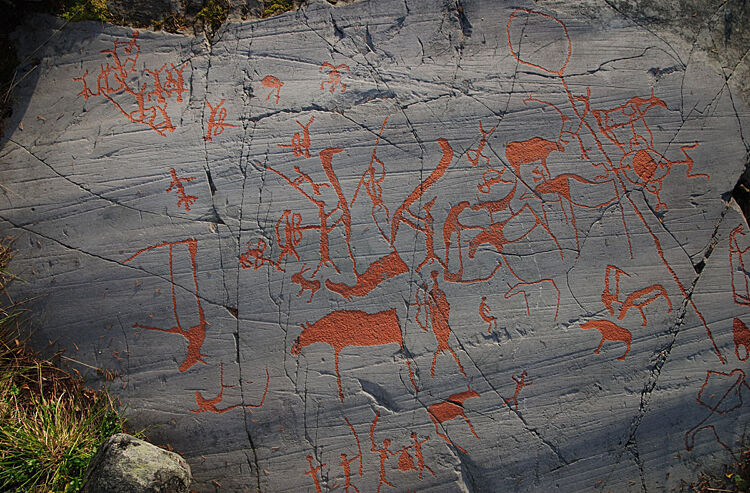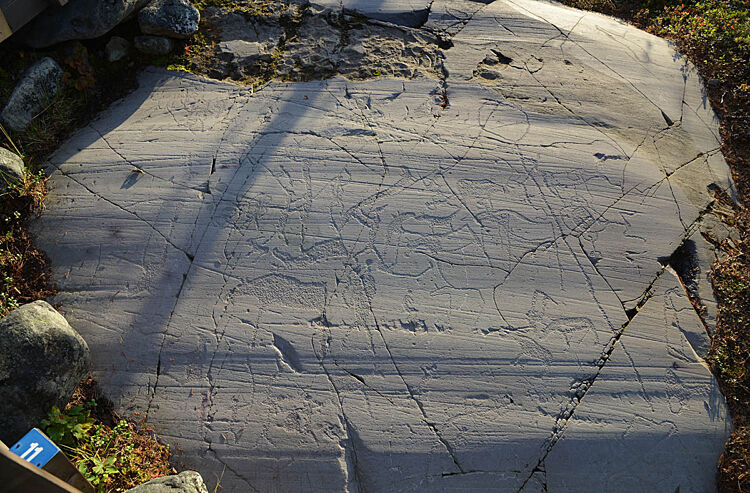The red-painted rock carvings
When the Alta rock carvings were discovered in the 1970s, many were painted red to make them easier to see. This was common practice at the time, but today it is viewed differently. Paint can damage the carvings, hide details, and give a misleading impression. That is why the modern paint is now being removed.
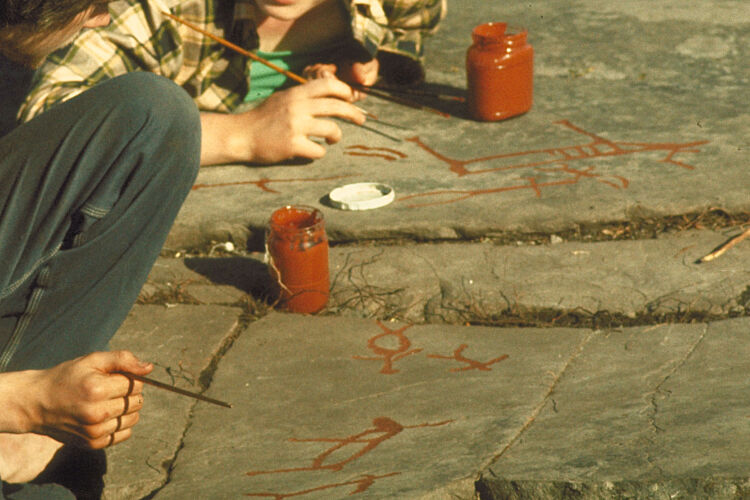
The practice of painting prehistoric rock carvings is unique to Scandinavia. It began in the interwar period and has since become a common method of presenting rock art sites to the public. This method has also been justified as a means of preventing people from scratching or colouring the carvings themselves in an attempt to make them more visible, as well as helping to avoid accidental damage by highlighting carvings that might otherwise go unnoticed. However, this approach has been criticised by rock art specialists in other countries. It has also been debated in Norway, where attitudes have gradually shifted since the 1990s. Currently, the Directorate for Cultural Heritage maintains a restrictive policy, aiming to avoid painting wherever possible. The Directorate provides funding for developing paint removal methods and for carrying out the removal itself.
In Alta, different types of paint have been used, from linseed oil-based paint in the 1970s to modern house paint. The carvings, which are now being stripped of paint, were painted several times between 1977 and 1994 without first removing the older layers. Consequently, some still have thick coatings of paint, which makes it difficult to see tool marks and fine details in the figures. The colour has also changed over time, meaning that a single carving may now appear in varying shades of red and orange. The wear is uneven, and many figures appear incomplete. New documentation shows that some have been painted incorrectly, either with missing parts or with natural surface features mistakenly included. The paint may also pose a risk to the carvings themselves, as flaking paint can pull tiny mineral grains from the surface. In other cases, the paint appears to have penetrated deeply into the rock, which could make removal more challenging.
Were the rock carvings painted in the Stone Age?
There is no evidence to suggest that they were. Yet many visitors today assume the carvings have always been red. Some believe the modern paint is a remnant of prehistoric pigments, while others think it was added to recreate an ancient appearance. In reality, rock carvings were cut directly into solid bedrock – and occasionally on detached stone slabs – with no documented traces of prehistoric colouring.
But what did the carvings actually look like thousands of years ago, when they were first made at the water’s edge? The bedrock in Hjemmeluft contains iron, and along the shoreline its surface naturally takes on a reddish-brown hue from iron oxide. These rocks were smooth and free of vegetation, making them ideal for carving. When rock is cut into, the marks left on the surface are always lighter than the surrounding area. On the reddish rocks in Hjemmeluft, this contrast would have been particularly striking.
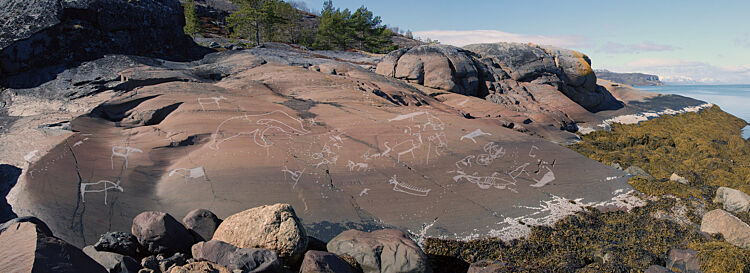

The long journey
The rock carvings were created by humans, but they are also part of the rock and the surrounding natural environment. After they were made at the water’s edge, the land uplift that had been going on since the Ice Age continued. New rock surfaces emerged from the sea, offering fresh canvases for new carvings, while the older ones gradually shifted away from their original setting. Lichen and other vegetation took hold, causing chemical weathering that dissolved the thin reddish-brown coating on the rock surface. Over time, both the carvings and the rock turned grey.
The rock carvings have endured a great deal, yet many remain in remarkable condition. Preserving these unique sites is a key part of our ongoing work, so that visitors - today and in the future - can continue to experience them. One important measure is the removal of modern paint. We also manage vegetation, including the use of ethanol to control lichen growth. Rock surfaces without lichen appear lighter grey than those still covered. These clean surfaces make the carvings easier to distinguish—even if they no longer have the sharp contrast they once had.
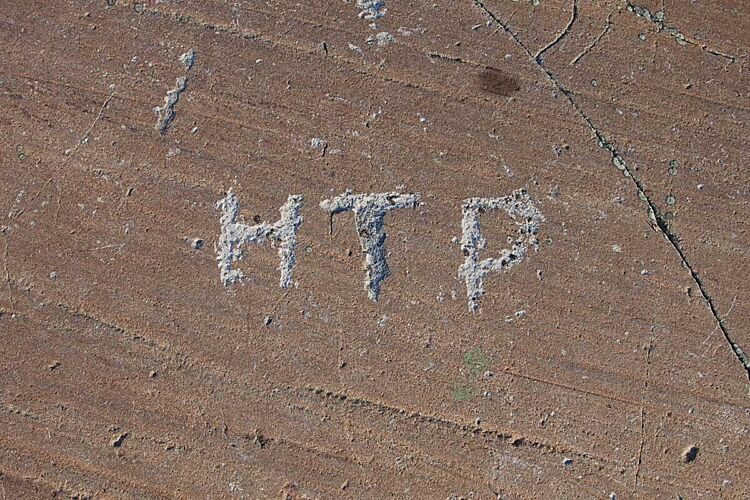
The end of the red paint
For decades, red-painted carvings have influenced perceptions of Alta’s rock art. Although they represent only a small portion of the total engravings, these figures have dominated marketing and public presentations for the last 50 years. While the red colour enhances visibility, it creates an image that neither reflects the original appearance nor the current state of the carvings. Now, this visual expression is gradually disappearing.
The process of removing the paint has been ongoing for several years. Between 2010 and 2015, the red paint was removed from the eastern panels of Hjemmeluft. The next step is the panels closest to the museum. A team of specialists from the NTNU University Museum and the Arctic University Museum of Norway is conducting the work. The project is funded by the Directorate for Cultural Heritage. This year's fieldwork will take place from 21 July to 1 August. It will be several years before all the panels are completely free of paint.
Discover the unpainted carvings
They encourage personal interpretation and experience, but they also require more from us as viewers. They are at their most visible when the low sun casts shadows within the figures, so visiting early or late in the day can offer the best viewing experience. However, many of the carvings can also be seen under different lighting conditions.
Take your time. Once you spot one figure, others often begin to appear. The guidebook can help.
Try different perspectives. What happens if you take a few steps to the side or crouch down? Even small changes in angle can reveal more.
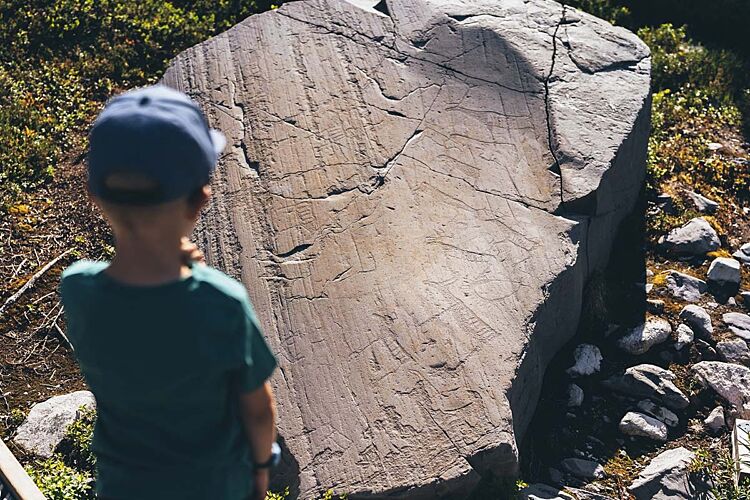
Interested in learning more?
Red-coated rocks on the seashore: The esthetics and geology of prehistoric rock art in Alta, Arctic Norway.
